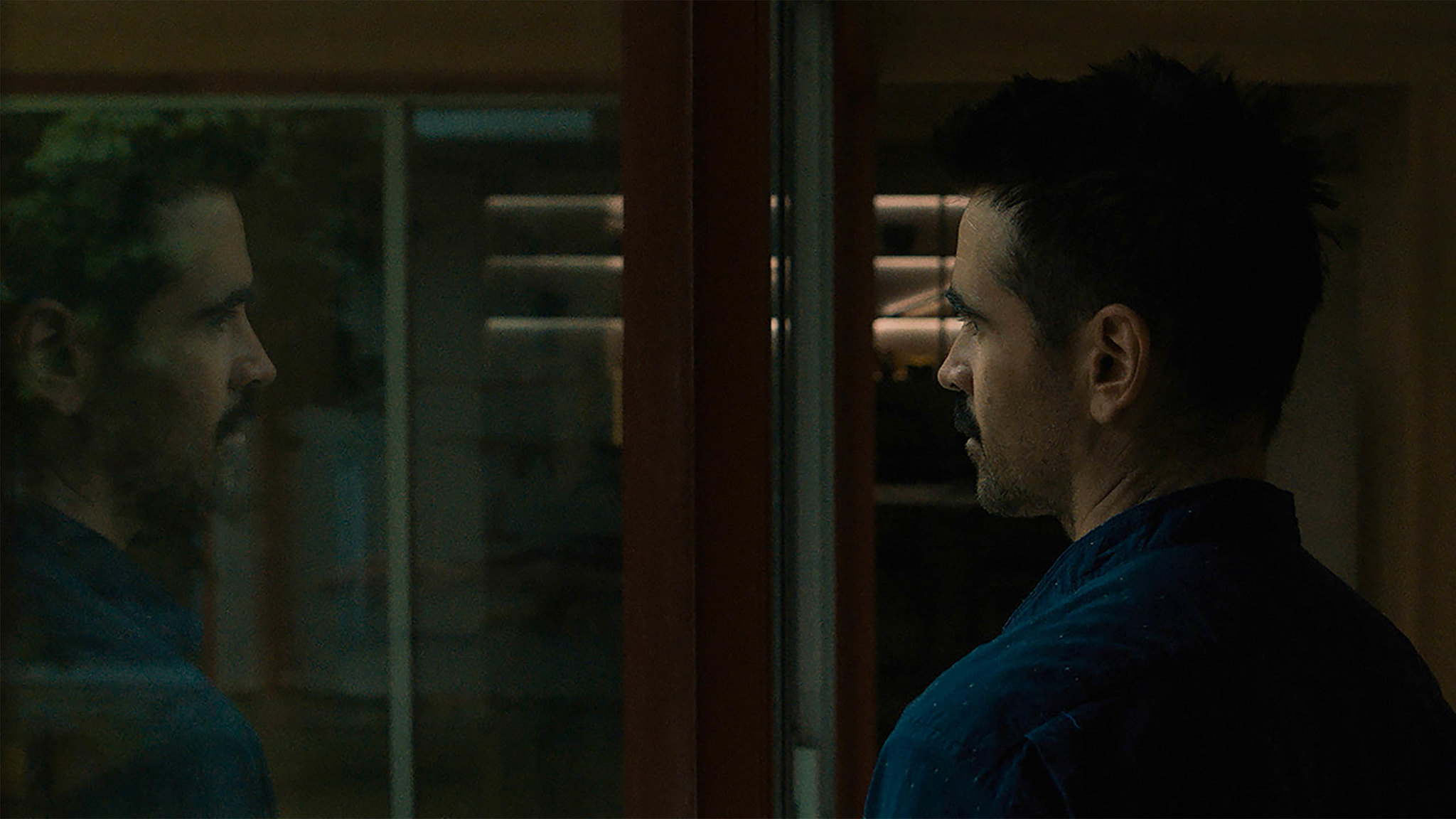 Back to selection
Back to selection
“You Have to Become Vulnerable With Your Director Before You Can Go On Set”: DP Benjamin Loeb on After Yang
 Colin Farrell in After Yang by Kogonada. (Photo: Benjamin Loeb/A24)
Colin Farrell in After Yang by Kogonada. (Photo: Benjamin Loeb/A24) Like Columbus before it, Kogonada’s After Yang tackles its heady subject matter—including, in this case, a climate catastrophe and existential questions about the nature of humanity and memory that arise from its sci-fi setting—only obliquely, through composition and framing. Cinematographer Benjamin Loeb explained the significance of emptiness and space to cinema and the love he and Kogonada share for Ozu.
Filmmaker: How and why did you wind up being the cinematographer of your film? What were the factors and attributes that led to your being hired for this job?
Loeb: Honestly, I believe I was the unicorn of the interviews and came in very late in the process. I got an interview with Kogonada and we just had a wonderful first call where we spoke for hours about everything but the movie. We connected on the topic of emptiness or absence in cinema, as well as space and its relationships to human beings and how it relates to emotions. I think we both just felt like this was a conversation we wanted to keep having, and the next week I was hired.
Filmmaker: What were your artistic goals on this film, and how did you realize them? How did you want your cinematography to enhance the film’s storytelling and treatment of its characters?
Loeb: My personal goals were to have inquisitive and honest conversations about our search for cinema and to translate those into the film. The conversations and process leading up to the film itself are so important. It is such an intimate process to make a movie; you have to become vulnerable with your director before you can go on set—sort of the same way the actors become vulnerable for the camera. Other than this, I wanted to be there in support of Kogonada’s vision. I had obviously seen Columbus and was blown away by its simplicity and its brave choices in blocking as well as framing. I wanted to serve the film and that vision, which really is just about learning who your director is, and the language they want to speak or are searching for.
Filmmaker: Were there any specific influences on your cinematography, whether they be other films, or visual art, of photography, or something else?
Loeb: Of course Ozu was a big inspiration to our film, as Kogonada is a devoted scholar of Yasujirō Ozu. We went through a number of his films and discussed his sensibilities at length. We also looked at films like Tony Takitani and All About Lily Chou Chou.
Filmmaker: What were the biggest challenges posed by production to those goals?
Loeb: I think the hardest part about shooting this film was to shoot it in New York, to be honest. Finding the right locations became quite a hard task, as the film wasn’t really embracing New York and it is set in a somewhat undefined future.
Filmmaker: What camera did you shoot on? Why did you choose the camera that you did? What lenses did you use?
Loeb: We chose the Alexa Mini for its versatility and how well it serves in low light scenarios—we wanted After Yang to be a meditative experience, grounded in reality, with a deeper tone to the imagery. I spent quite a while at Panavision exploring different combinations before landing on a detuned set of Primos as well as a Pathe and a Canon 8-64 zoom.
Filmmaker: Describe your approach to lighting.
Loeb: My gaffer Andrew Hubbard and I wanted to play with color contrast and separation in the lighting, keep the direct sources to Tungsten units, and do the bounce with larger HMIs. We tried to keep things very subtle and soft, with little kicks of harder light.
Filmmaker: What was the most difficult scene to realize and why? And how did you do it?
Loeb: I think generally all our scenes in the Eichler house. We were shooting there for about 12 days in a row, and needed continuity and flexibility. And the house had so many windows, which turned into massive mirrors when it got darker. My 1st AC, David Regan, became the reflection wizard—finding all the things we had all forgotten to hide around the house. Also, we had sort of boxed the house in to control the sun and make our own, and the lawn in front of the house was so tiny it was like playing Tetris getting the lifts just up and down each day.
Filmmaker: Finally, describe the finishing of the film. How much of your look was “baked in” versus realized in the DI?
Loeb: Joe Gawler from Harbor was my colorist, and we came up with a LUT that pushed me to light much more specifically—both for color and contrast—to the final look of the film. So I would say the tonality of the film was baked in, but with Joe we just made it all come to life.
TECH BOX
Film Title: After Yang
Camera: Alexa Mini
Lenses: PV Primos
Color Grading: Harbor/Joe Gawler
